Meet Oscar and Felix, otherwise known as Scribbly Gum and Blackbutt. Oscar (Eucalyptus racemosa, Scribbly Gum or Snappy Gum) and Felix (Eucalyptus pilularis, Blackbutt) are two species of gum trees native to the eastern coast of Australia, often found together on drier, sandier soils. In the Tall Gum forests of the UNESCO World Heritage listed island of K’gari, Oscar and Felix cohabit as close roommates: two very different trees that have learned to overcome their differences, bound by a shared experience. K’gari is the largest sand island in the world; also commonly known as Fraser Island, this unique island off the Queensland coast is home to an incredible forest ecosystem.
If you are familiar with K’gari, it goes without saying how precious the rainforests are on this island paradise. Aptly named, K’gari means ‘paradise’ in the language of the Traditional Owners, the Butchulla People. It is hard to imagine the geo-ecological chain of natural events that led to such highly diverse and productive forests emerging from nutrient-poor sand. K’gari’s Tall Gum forests receive much less attention than its rainforest, yet they are equally vital, surrounding and protecting the island’s rainforest core from drying winds and ocean spray. The many forest types on K’gari are huddled together like layers in a cake, in which the rainforest makes up the chocolate centre.
Scribbly Gum and Blackbutt, though they don’t make up the well-recognised island rainforest, are equally deserving of the admiration of island visitors as they make their way through the leafy tracks and trails of K’gari. Each in their own way, they tell the same fascinating story to anyone who looks carefully at their patterned bark.
Scribbly Gum and Blackbutt are polar opposites in many regards, though both highly recognisable species. Oscar, our Scribbly Gum, gets its name from the fun-loving slob Oscar Madison from the classic 1968 film The Odd Couple. Like its namesake, Oscar the Scribbly Gum is a ‘messy’ tree with mottled and stained trunks. In times of drought, the Scribbly Gum drops its bark haphazardly in untidy piles on its (forest) floor.
In the film, Oscar’s roommate, Felix Unger, is a neurotic neat freak. Hence, Blackbutt, a ‘tidy’ tree — with its rough, strong bark and its tall, straight stature (up to 60 metres) is Felix in the story of these two gum trees. These ‘neat freak’ or perfectionist tree traits made Blackbutt one of the most important trees for the now-defunct timber industry on K’gari.
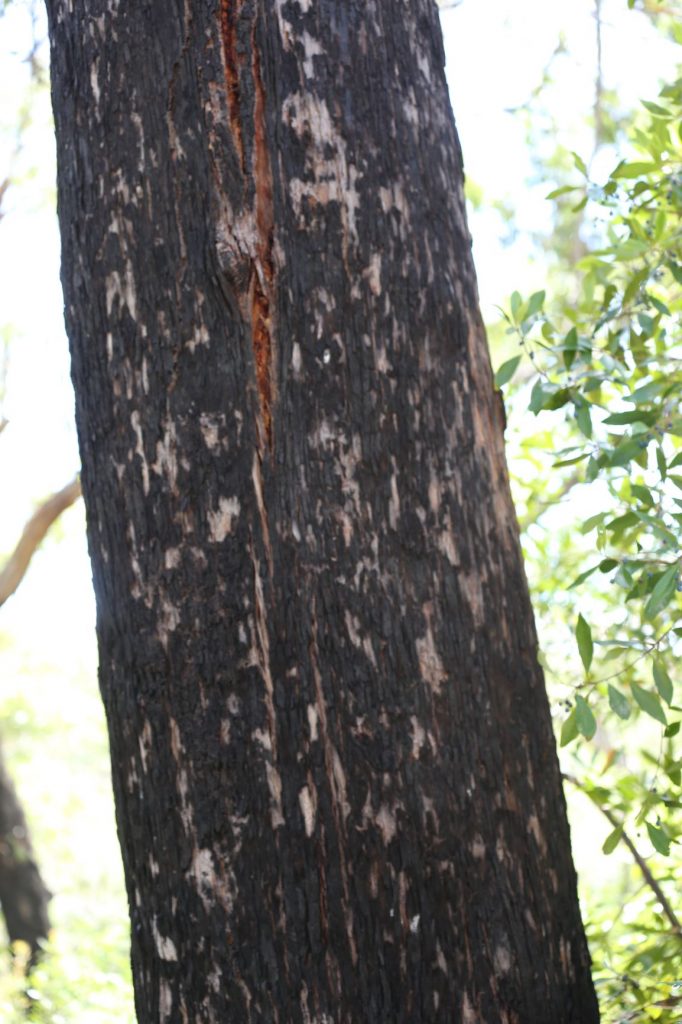
Despite appearing superficially at odds, like Oscar and Felix in the film, Scribbly and Blackbutt have much in common beneath the surface. For the two roommates in the film, it was divorce — a shared emotional wound eating away at them metaphorically. But for Scribbly Gum and Blackbutt, there’s nothing metaphorical about the internal struggles they share: a tunnelling moth that is literally eating at their insides.
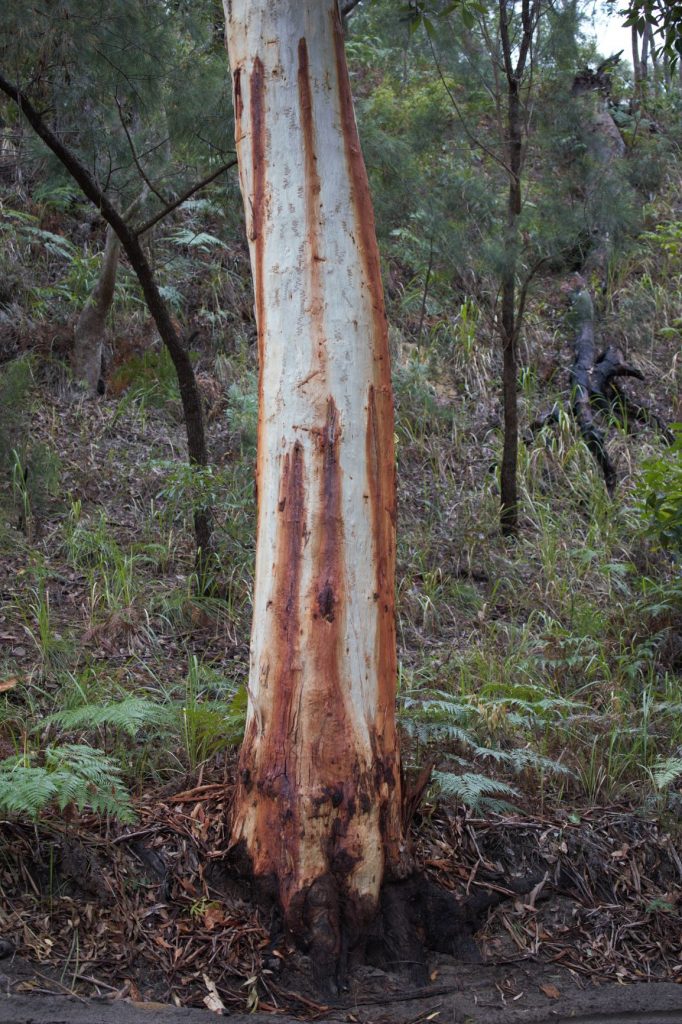
Both trees house the mining caterpillar of the Scribbly Gum Moths (Ogmograptis spp. Bucculatridae). The genus name, Ogmograptis, translates to ‘the writer of the Ogam script’, because the patterns (or ‘scribbles’) left on tree trunks by its mining resembled this ancient Celtic script. The caterpillar (moth larva) eats through specific layers of tree tissue and the tunnels it creates protect the caterpillar from predators, pathogens and parasites.
As the caterpillar bores into the tree, the tree responds by producing a kind of scar tissue in an attempt to heal itself – and this new tissue is full of rich nutrients for the caterpillar to live on. In this way, the caterpillar transforms the inhospitable environment of the tree into a protective and life-sustaining home. The Scribbly Gum Moth larva could perhaps be described as the ‘third roommate’ in The Odd Couple – one who’s sleeping on the couch and raiding the pantry, without contributing to the rent!
Oscar, our Scribbly Gum, is pretty much an ‘open book’ type of a character, its internal wounds laid bare for all to see – the Scribbly Gum Moth etchings can be seen all across the trunk and branches. Felix the Blackbutt keeps things more hidden: it looks like a perfect tree on the surface, with the Scribbly Gum Moth tunnels showing only way up at the top of the canopy, where the etchings are written along its smooth upper branches. The ‘scribbles’ of Scribbly Gum Moths have also been etched in Australian children’s imaginations since 1918 by the well-loved Snugglepot and Cuddlepie books written by May Gibbs.
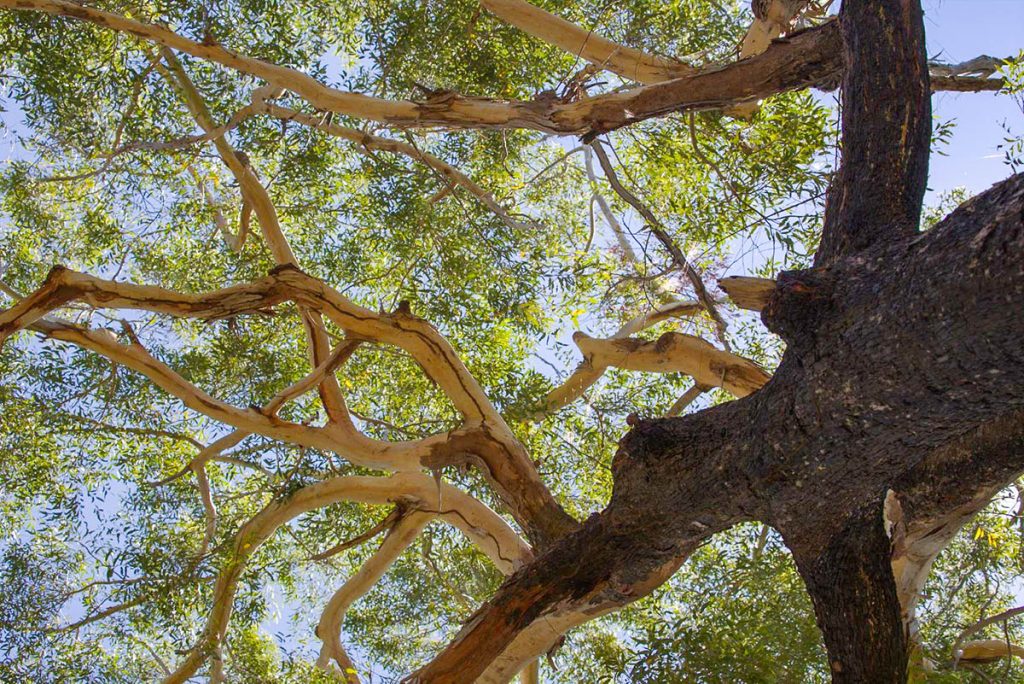
The scribbly gum tunnels are etched into the bark of both species and some other gum tree species too, but with a kind of invisible ink, not revealed until the caterpillar grows up, bores out of the trunk and pupates (develops into an adult) – a spectacular coming of age party. The caterpillar’s scribbles become visible soon after, when the bark cracks off the tree — then the newly emerged Scribbly Gum Moth’s childhood memories are left as an open diary for all to behold.
Up until 2012, scientists knew little about this common moth and brazen graffiti artist. A group of retired CSIRO scientists joined forces to discover that the Scribbly Gum Moths are made up of many species in three groups, and described 11 new species. It also turned out these very moths that once hid in plain sight are the descendants of an ancient ancestor group of moths that inhabited the supercontinent of Gondwana roughly 180 million years ago and fed on southern hemisphere plant families.
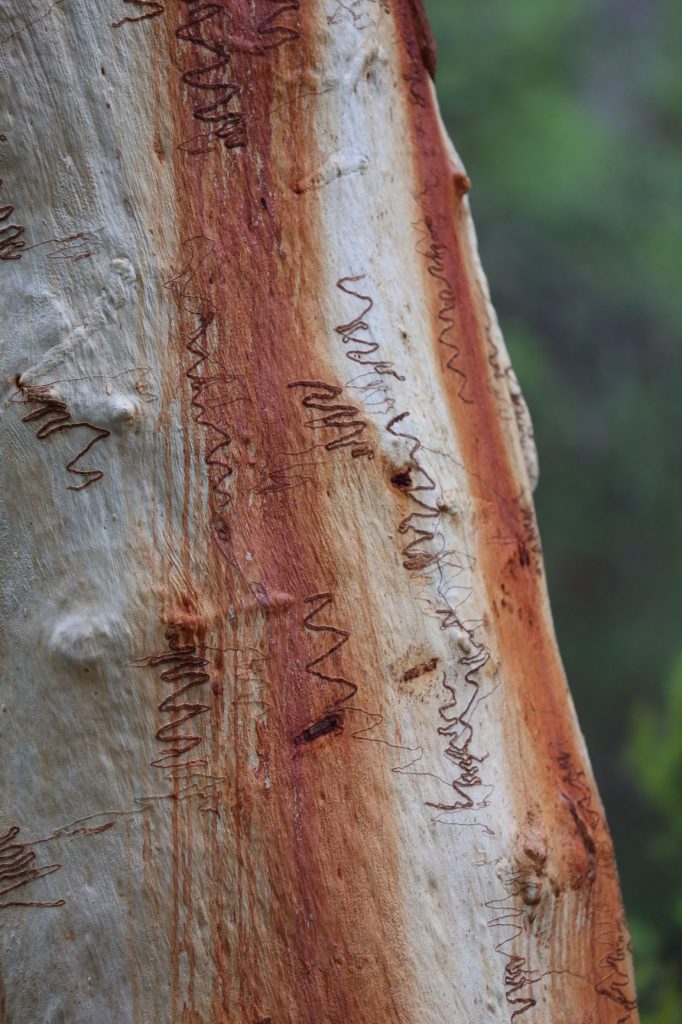
For Oscar and Felix in The Odd Couple, it is hard to see how these two roommates could possibly live together, but the pain of a divorce creates an understanding between them that allows them to eventually come to a mutual understanding. It turns out that the Scribbly Gum and the Blackbutt, these very different looking trees living together in the Tall Gum forests of K’gari, also have more in common than initially meets the eye. In their own ways, they are both in a constant process of healing wounds of their own – created by the writings of this ancient lineage of moths and permanent house guests, determined to make themselves at home and leave their mark wherever they go.
This article was supported by Eucalypt Australia.

Banner image depicts the Scribbly Gum and Blackbutt in the Tall Gum Forest of K’gari. All images are courtesy of Richard Unwin, husband and travelling companion of the author.

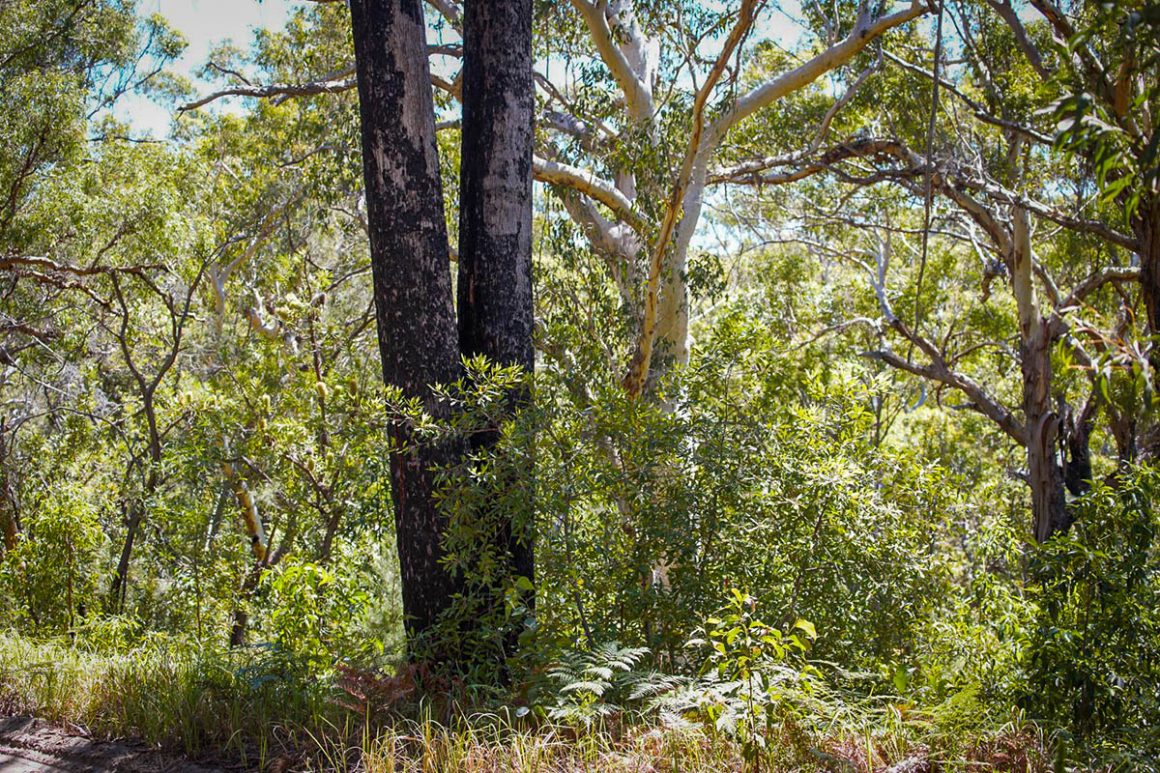
Leave a Reply